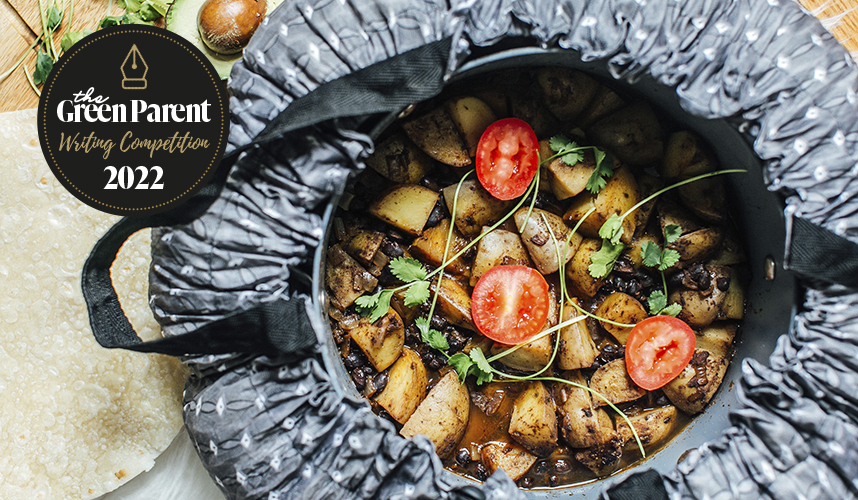With the nights starting to draw in, and the days becoming cooler, the thought of warming stews and steaming bowls of porridge is tempting me back into the kitchen. However, after a summer of freak weather events and with energy prices rocketing, I have a strengthened resolve to reduce our family’s energy usage and reliance on fossil fuels. So without investing in a wood powered oven, will stews and casseroles, cooked for hours on the hob, be a thing of the past?
Enter the concept of thermal cooking! This involves bringing a pot of food to the boil before transferring it to an insulated box or bag, where the food continues to cook slowly, without the need for an external heat source.
An ancient practice
This concept is not a new one. The earliest known thermal cooker dates all the way back to the medieval period in Europe; food would be heated in an earthenware pot before being placed in another larger pot, a box or even a hole in ground. It would be insulated using moss, hay or other dry material and then covered, allowing the food to cook without using fuel, or needing to be watched over. Hayboxes (a box filled with hay or straw into which the cooking pot is placed) were also commonly used during World War II, to help conserve rationed cooking fuel.
“With energy prices rocketing, I have a strengthened resolve to reduce our family’s energy usage and reliance on fossil fuels.”
TOP TIPS TO GET STARTED IN THERMAL COOKING
- Depending on what you are cooking, initial boiling times may need to be longer. Root vegetables and large pieces of meat will need boiling for longer, so if you are looking to further reduce cooking times, try cutting food into smaller chunks or even grating/mincing.
- To ensure your pan retains as much heat as possible, try and fill it as full as you can. If you need to cook a smaller amount, it’s better to use a smaller pan to reduce the surface area over which heat is lost.
- There are many recipes out there specifically written for thermal cookers (try googling wonderbag, haybox or thermal cooking recipes, or joining Facebook groups for tips and recipes). However, most slow cooker recipes will also be suitable, with only small changes needed.
- As well as stews, curries, dahls and casseroles, you can also use these cookers to make yoghurt! Follow a yoghurt recipe, but instead of transferring to a yoghurt maker or warm airing cupboard, place the saucepan into your thermal cooker.
- Why not take your thermal cooker on holiday? Smaller, portable versions are perfect for camping or picnics. Try preparing a meal on the stove before you set off and then taking it with you whilst it cooks; the perfect way to have a warm meal without the need to light the stove. They can also be used as a cool bag – the insulating material helps keep cold things cold as well as hot things hot!
Our thermal cooker is now an integral part of our weekly cooking. It does take a little more planning but I love experimenting with new recipes and it has been perfect for batch cooking meals for our family. So whether you’re trying to reduce your energy bills, living off-grid and needing to conserve fuel supplies, or just wanting to do your bit to help the planet, perhaps this might be an old cooking method to resurrect!







